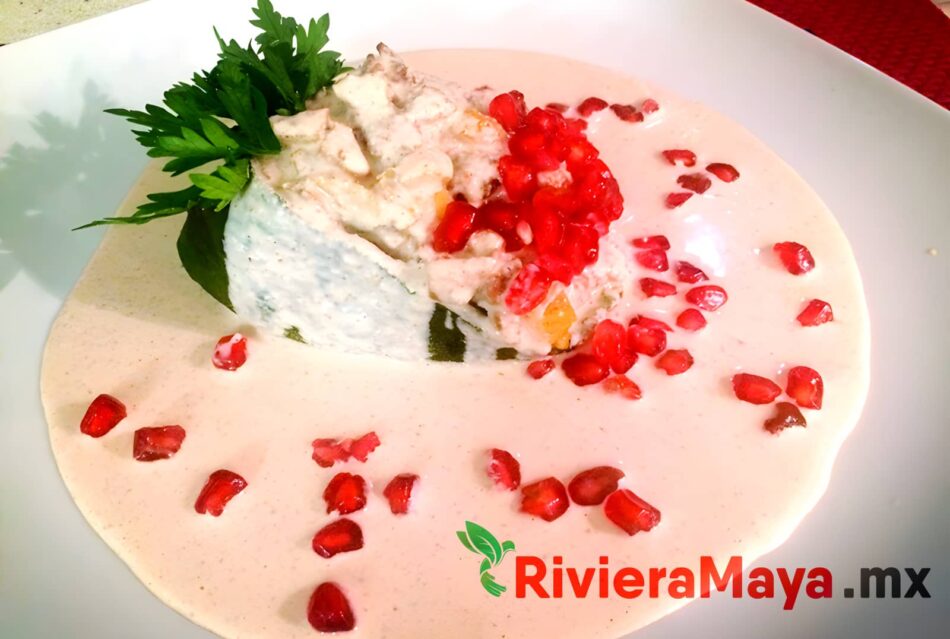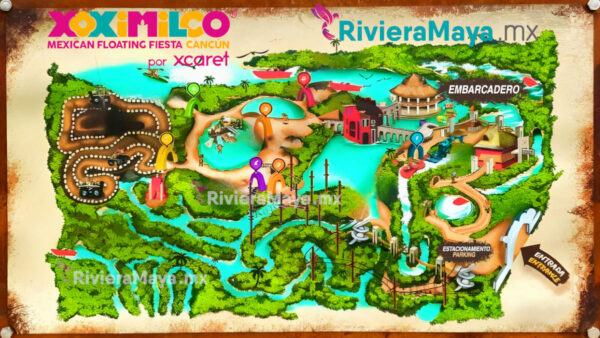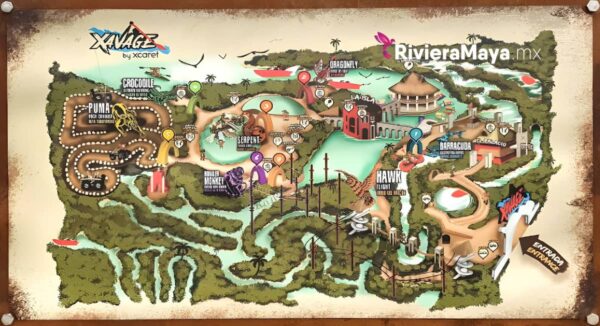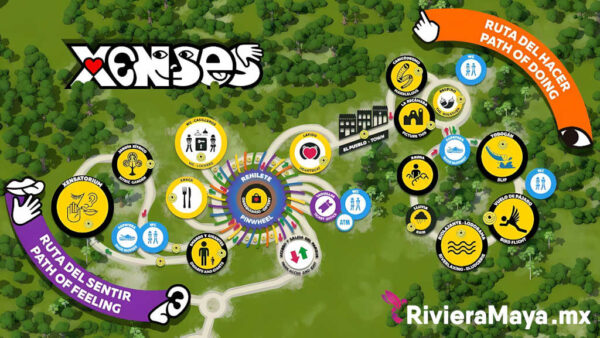Mexican cuisine, considered one of the four great gastronomies of the world, is an experience no traveler should miss in the Riviera Maya. Beyond enjoying the Caribbean beaches, taking a local cooking class will become one of those unforgettable memories you’ll take home from Mexico.
During our recent culinary adventure, we chose the workshop at Co.Cos Kitchen in Playa del Carmen. I’ll admit I’m not exactly a prodigy in the kitchen (my boyfriend made me promise I wouldn’t set the place on fire!).
But all worries vanished upon arrival: the studio gleamed with spotless utensils, aprons as crisp as banquet linens, and fresh ingredients arranged with military precision. They even had bilingual recipe books (English/Spanish) for us mere mortals.
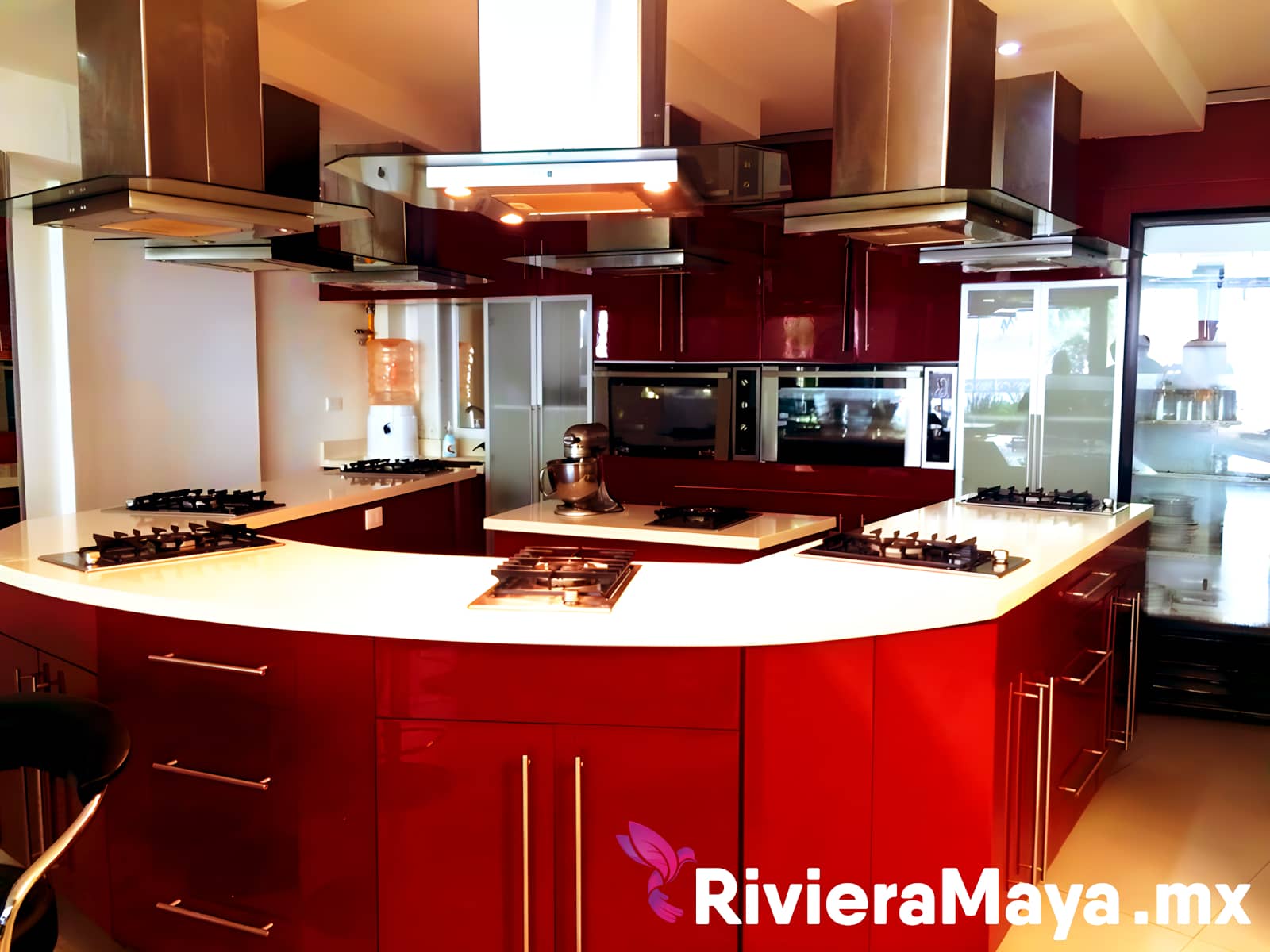
Where the magic happens: a studio equipped with technology and tradition. Photo: RivieraMaya.mx
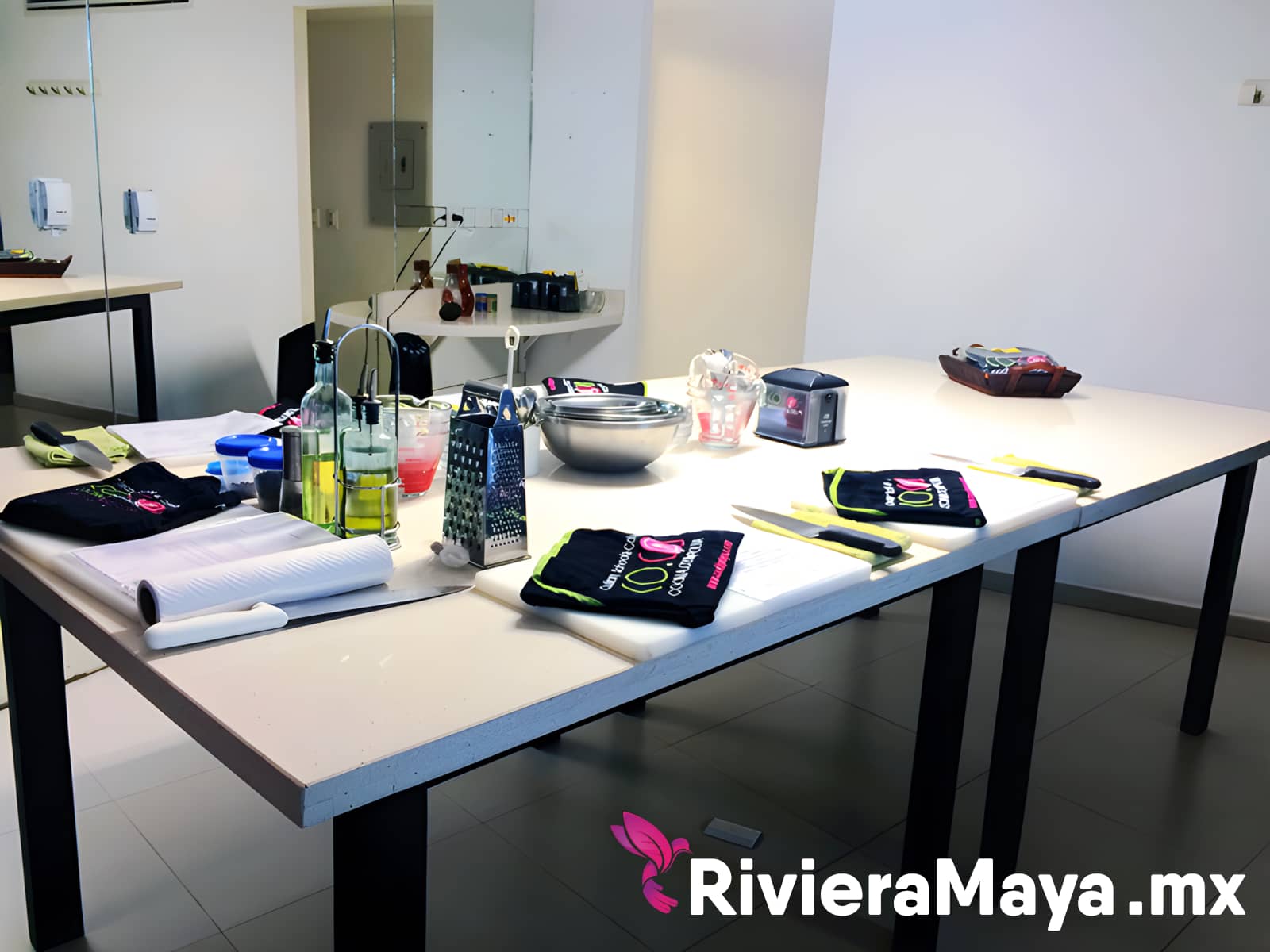
All set: recipe books and chef aprons that make even the least experienced feel professional.
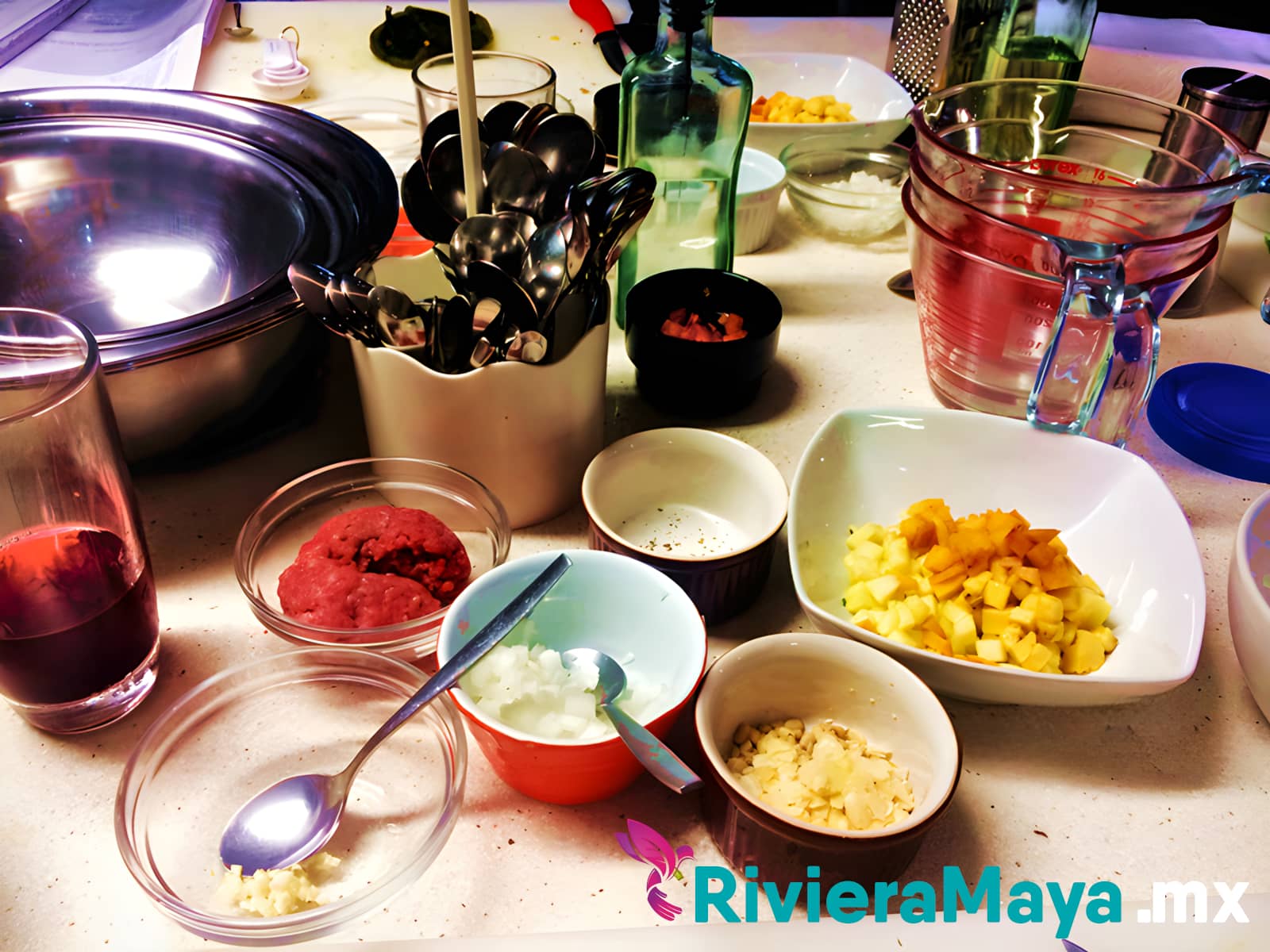
A rainbow of flavors: from poblano peppers to pomegranates bursting with ruby-like seeds.
Our chef-instructor, originally from Monterrey, welcomed us warmly. Our group had four students—me being the only Spanish speaker—so we opted for the English-language class.
The day split into two acts: first, preparing Chiles en Nogada and guacamole (recipes vary by season!), followed by a deep dive into the world of chiles and a premium tequila and mezcal tasting.
ACT I: Between Chiles and Avocados
The guacamole served as our warm-up. “Mash the avocados with love, not with fury!” the chef joked while overseeing each step. But the real challenge came with the Chiles en Nogada, Mexico’s quintessential patriotic dish served during national celebrations.
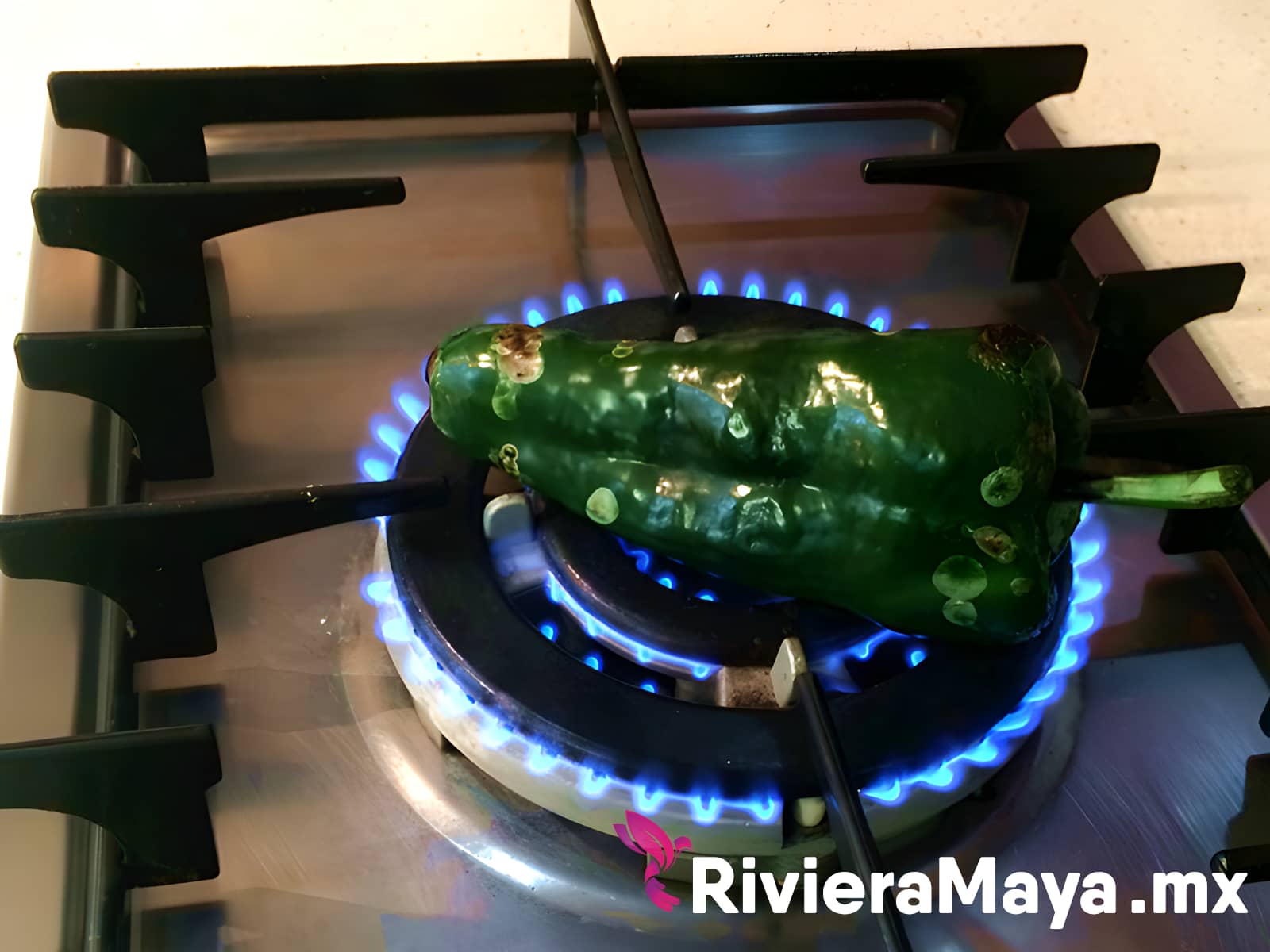
The roasting ritual: poblano peppers dancing over flames to remove their skins
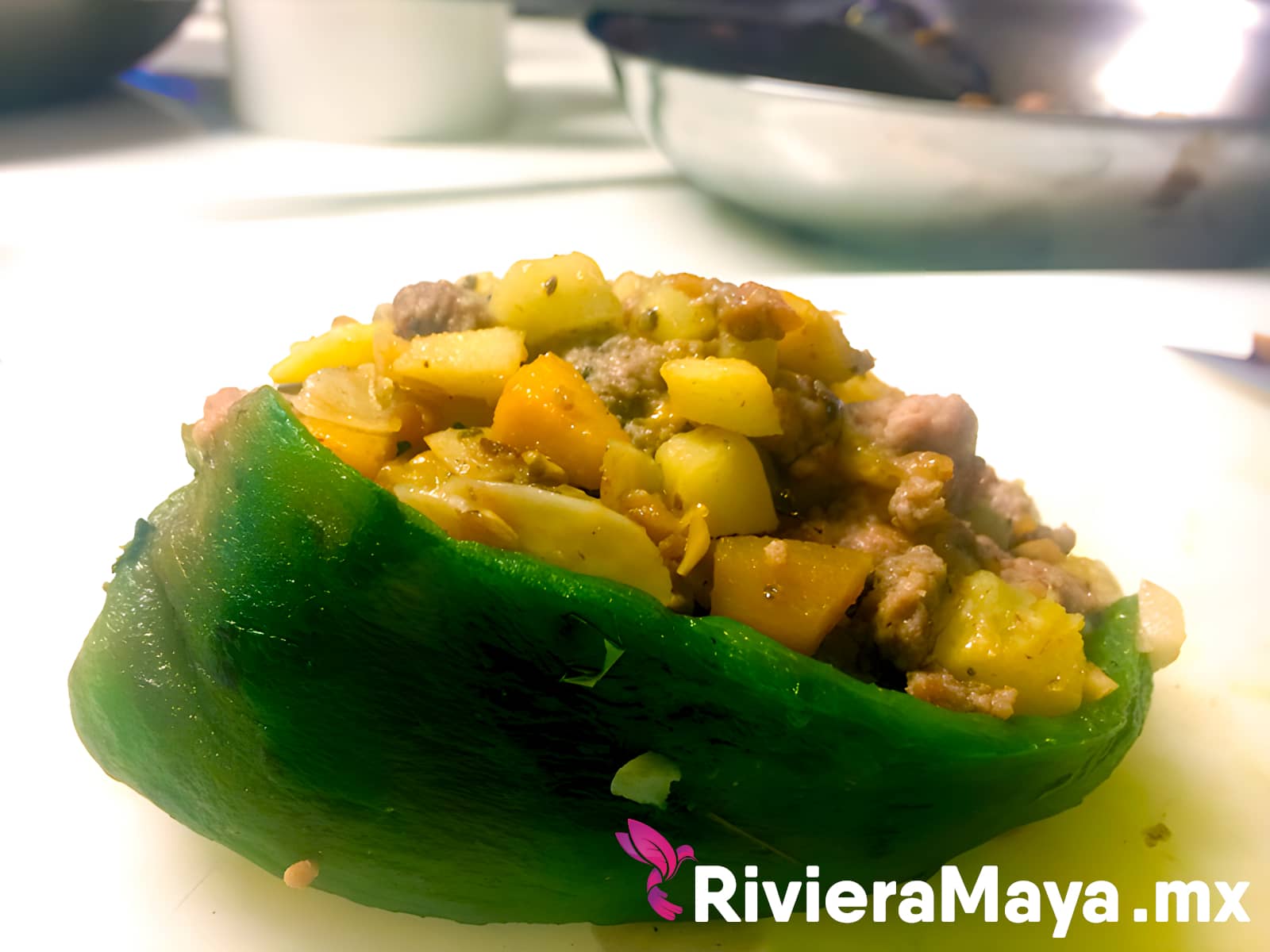
The art of stuffing: a mix of meat, dried fruits, and spices that smells like centuries-old tradition
The secret lies in the nogada—that creamy walnut sauce—and the finishing touch: pomegranate seeds and parsley to recreate the Mexican flag.
The result? A flavor that makes you want to hug your classmate. Paired with red wine, that first bite was pure culinary poetry.
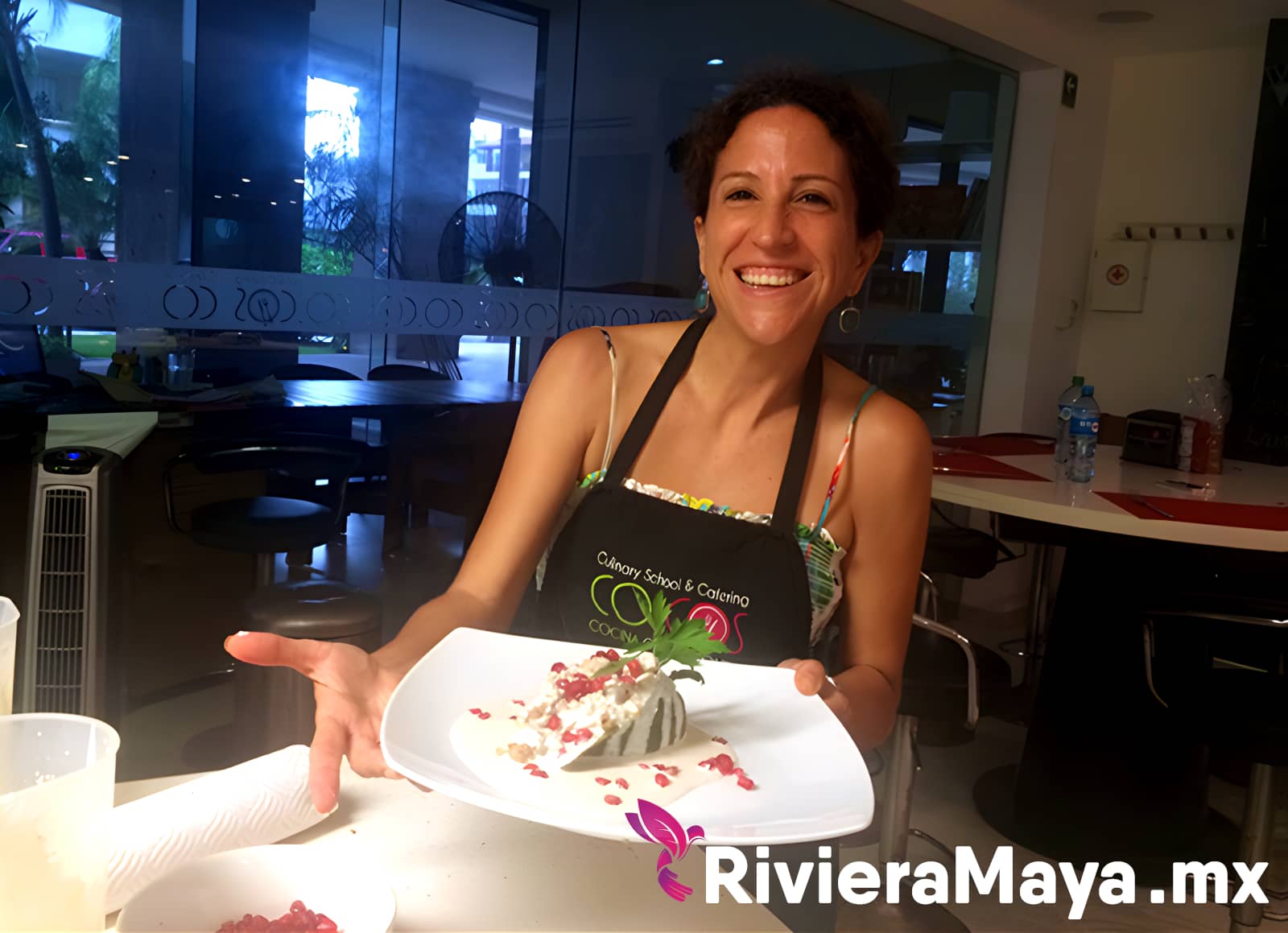
The chef’s masterpiece: each chile, a monument to convent-style cooking
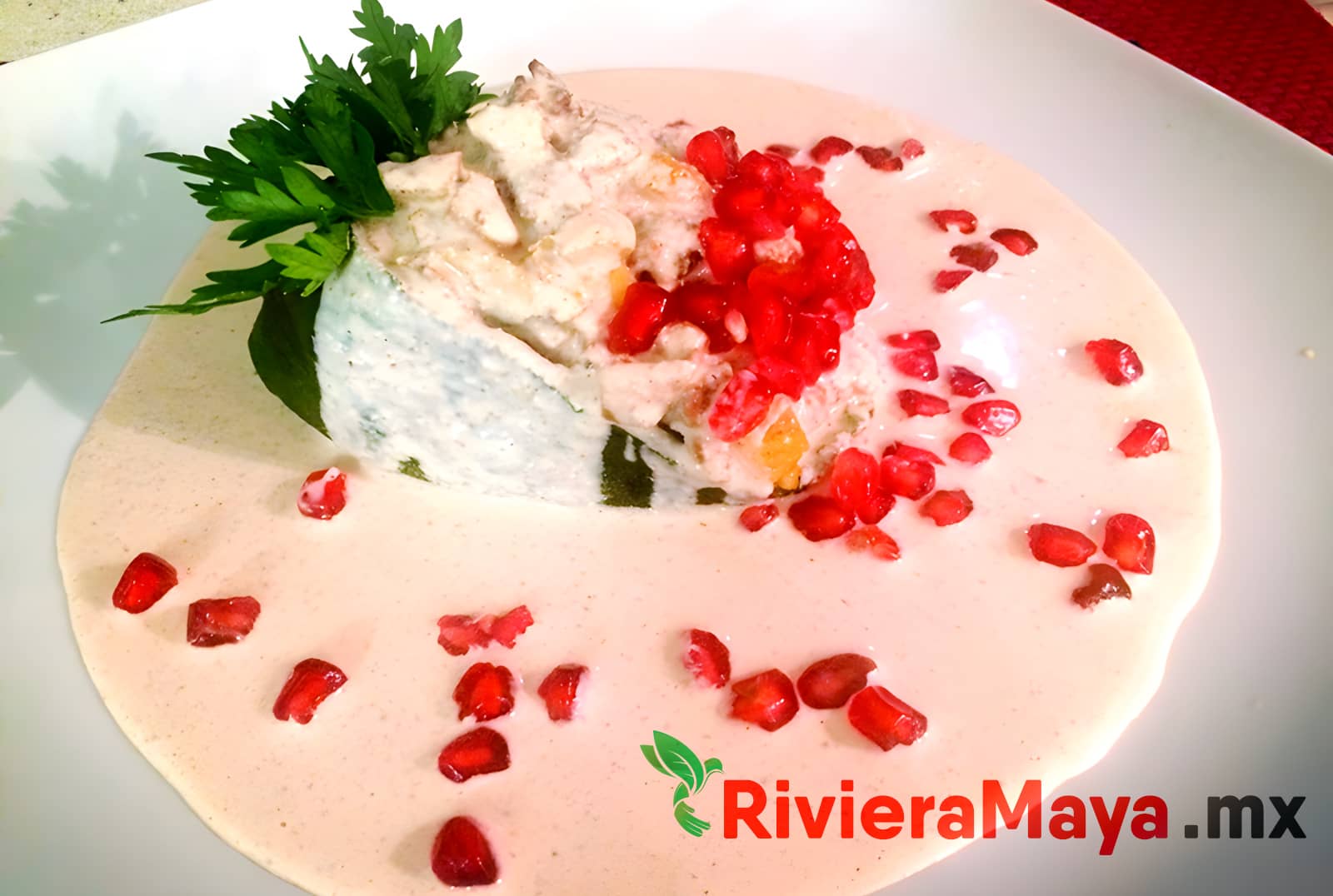
My final creation: Even my abuela would be proud!
ACT II: Fire and Distillates
The second part was a masterclass on chile culture. On the table: from mild poblanos to habaneros that dare even the bravest souls.
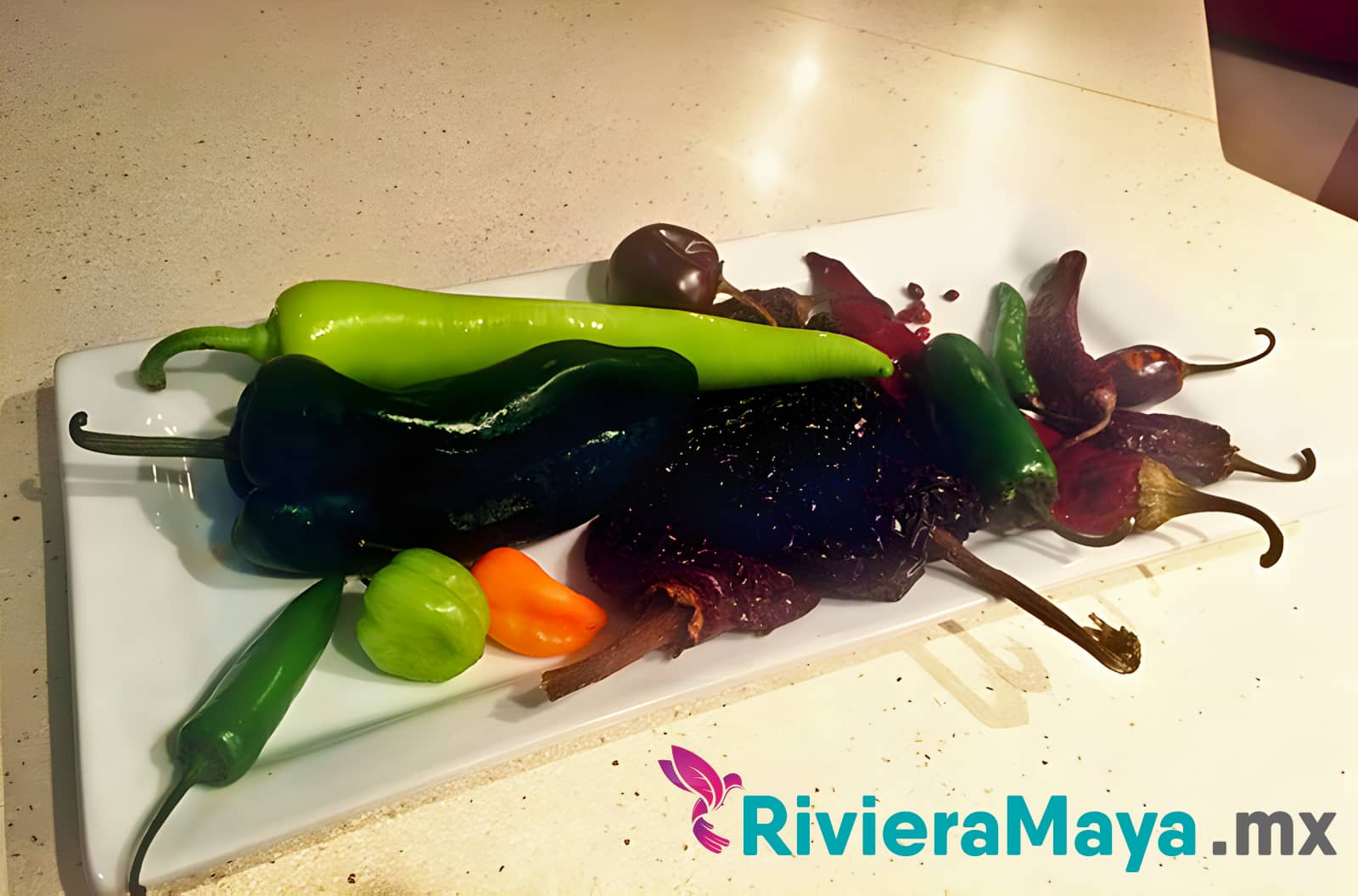
Mexico’s genetic map: over 200 chile varieties that define part of the nation’s identity.
The grand finale was a tequila and mezcal tasting that shattered myths. Forget tequila with lime and salt! The true art lies in savoring the nuances: from an aged tequila with vanilla notes to artisanal mezcals with worm—yes, that little bug in the bottle is edible!
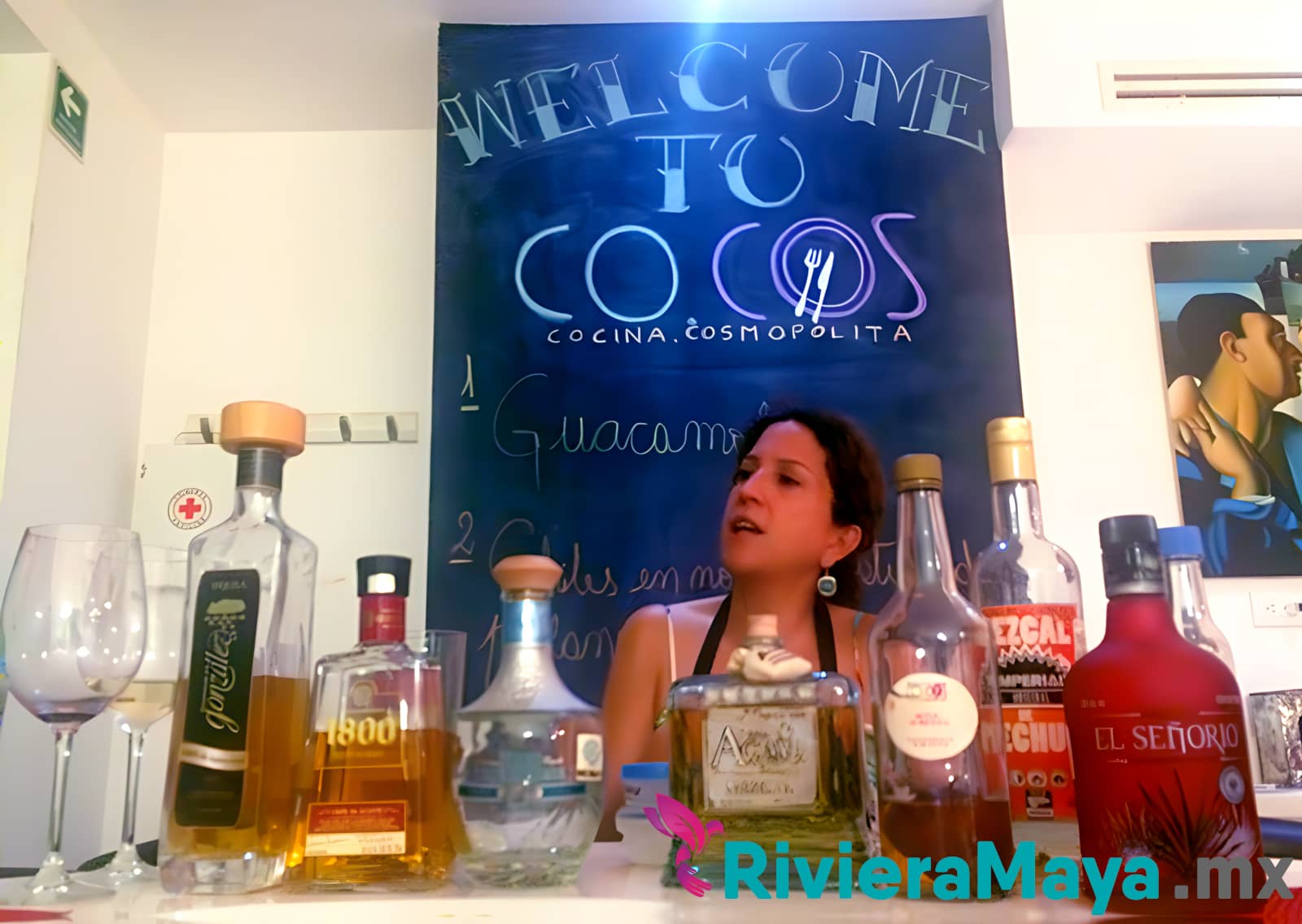
Every drop tells the story of agave.
Tequila vs Mezcal: The Battle of Agave Spirits
Raw material: Tequila uses only blue agave. Mezcal allows up to 30 varieties, with espadín being the most common. Production: Industrial vs artisanal. Mezcal is cooked in underground pits, giving it that signature smokiness.
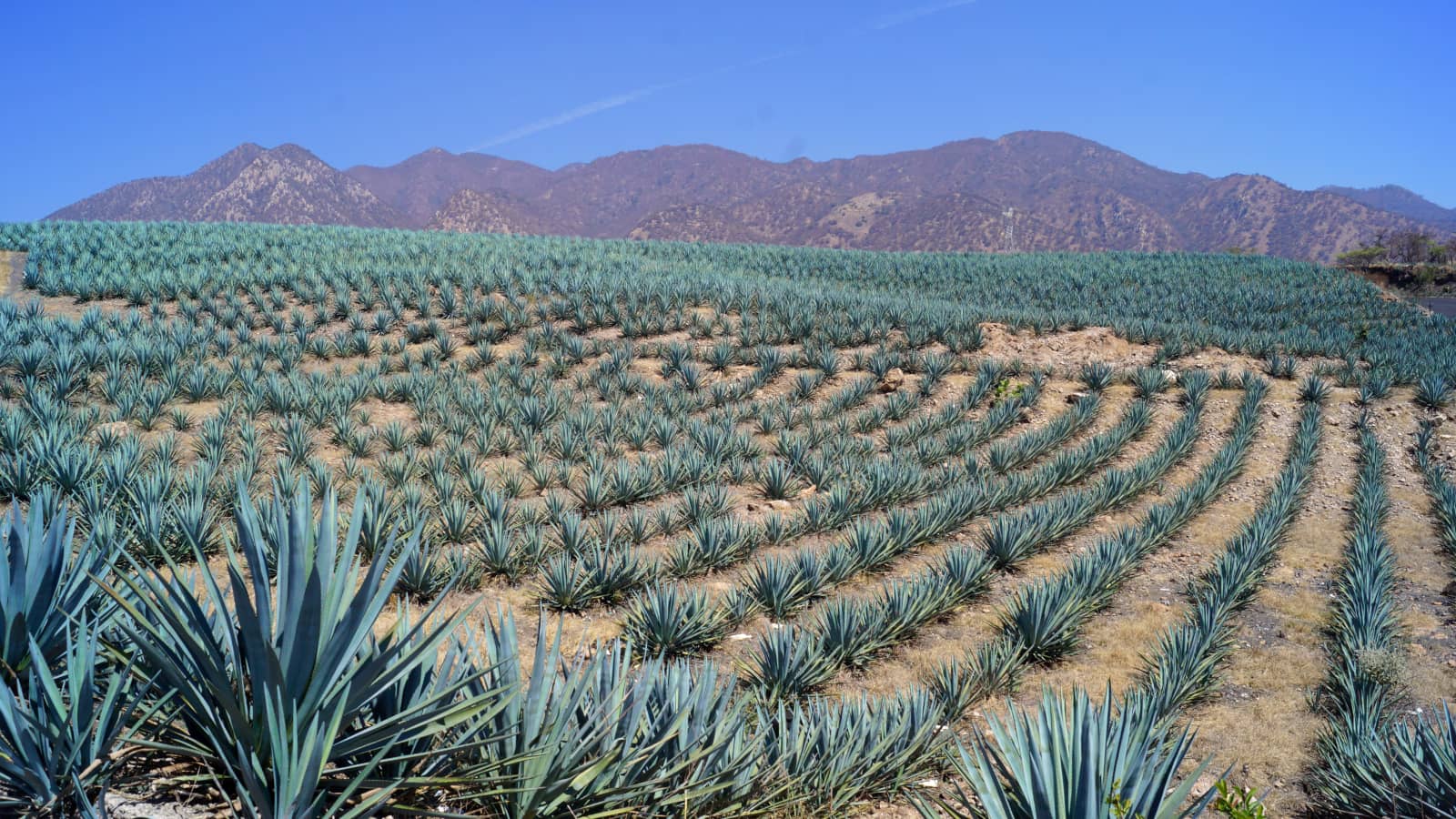
The blue fields of Jalisco: where agave becomes tequila. Photo: Sergio Niebla
The Drinking Ritual. No lime and salt. Purists drink it “sangrado”—in a wide glass to release aromas—at room temperature. The best pairing? Good conversation.
Four hours flew by among knives, laughter, and sips of mezcal. More than a class, it was a sensory journey no restaurant can replicate.
